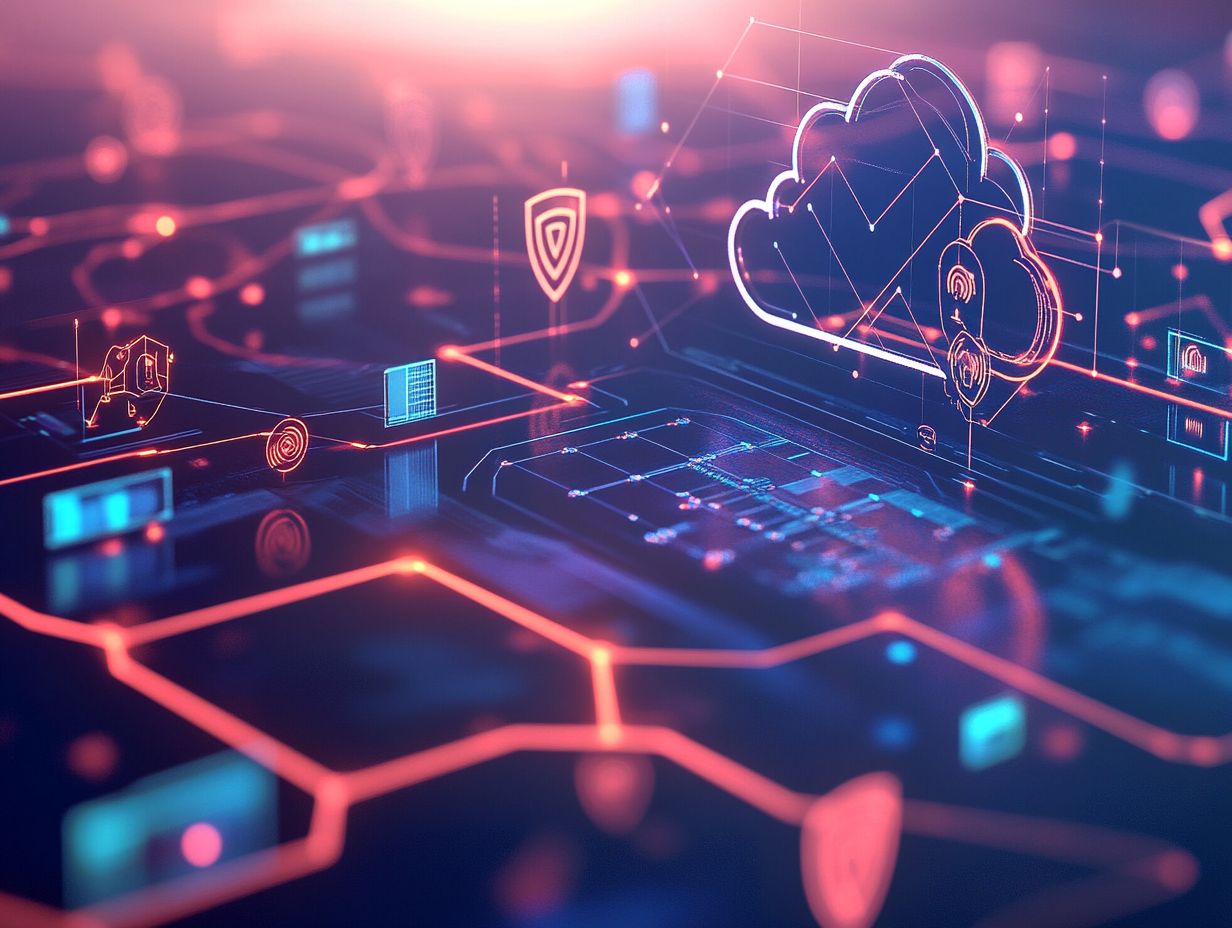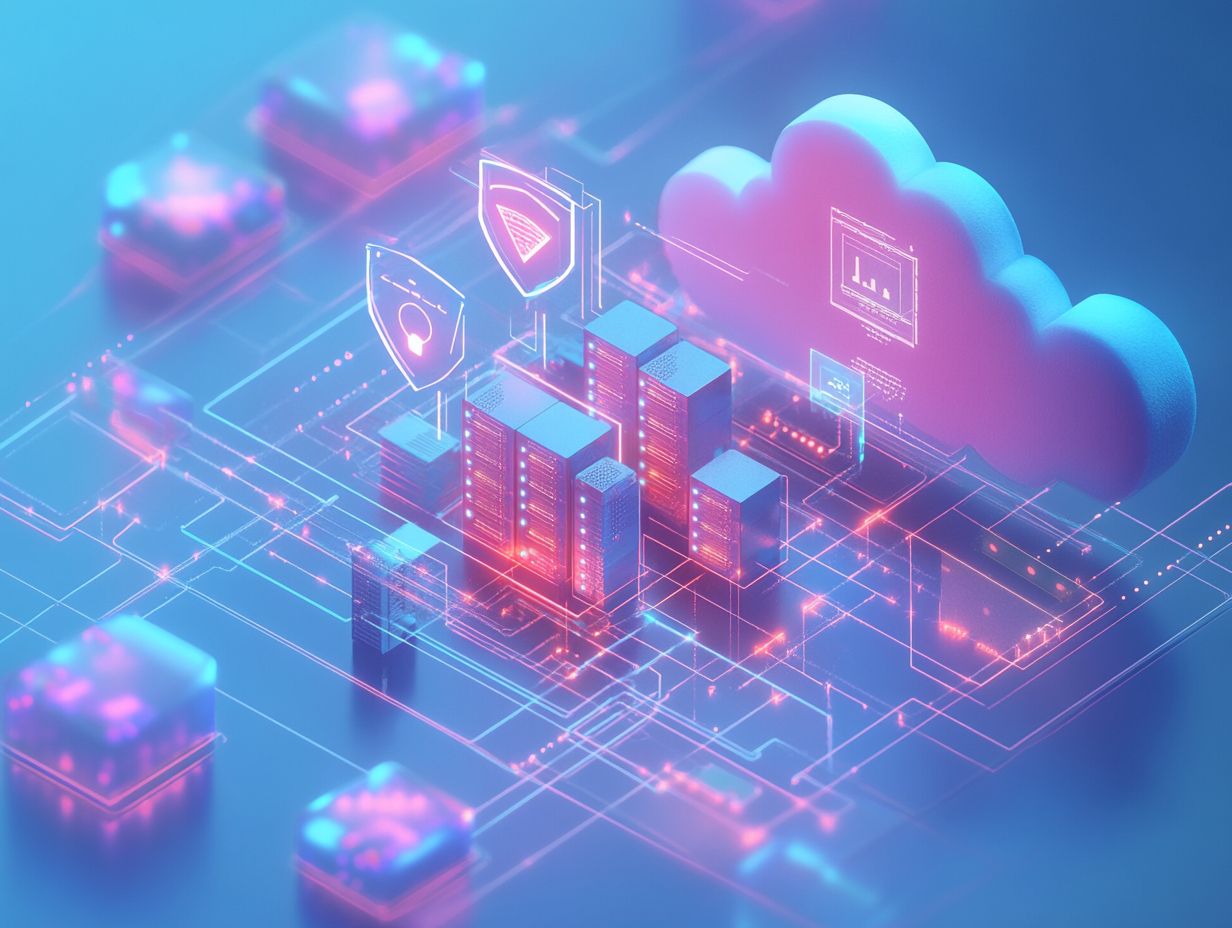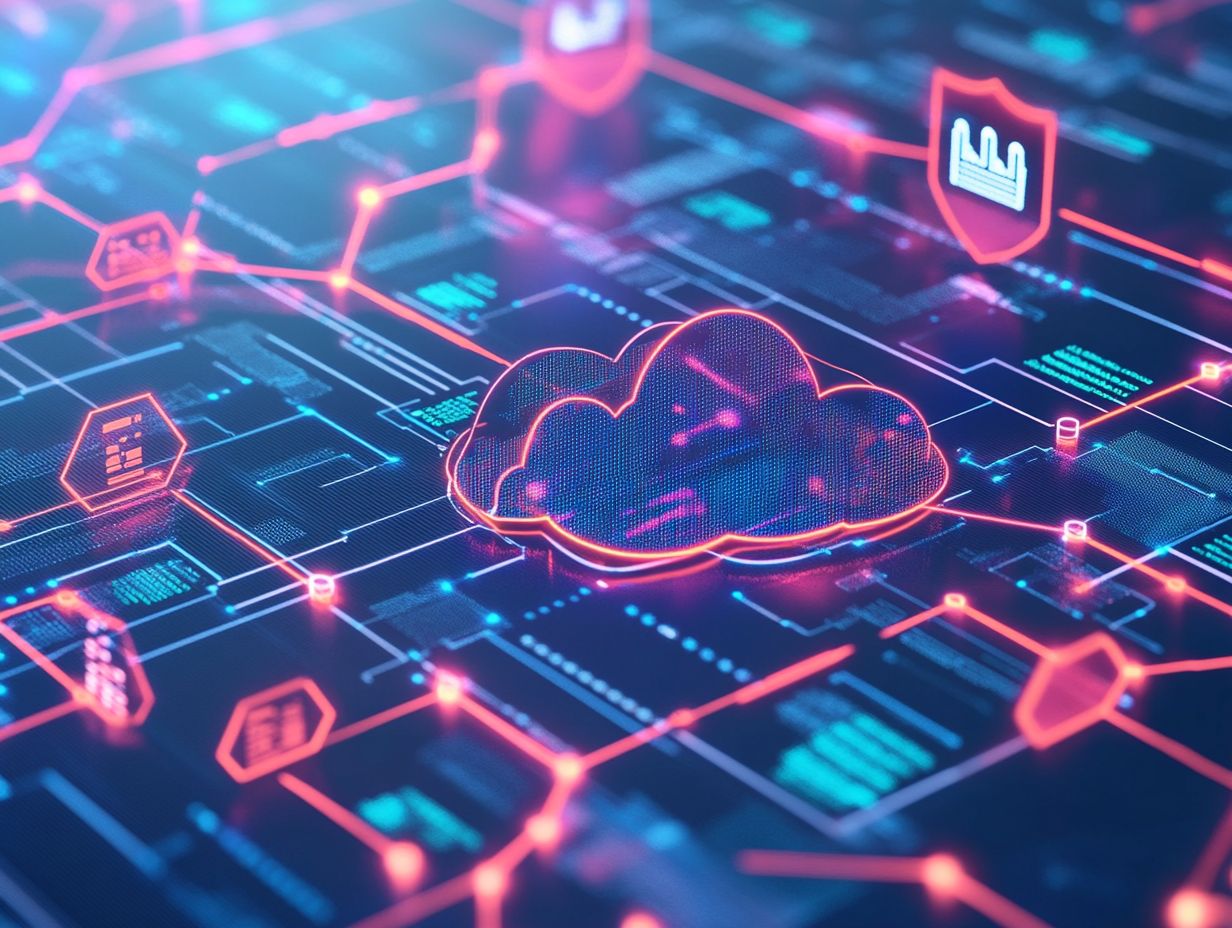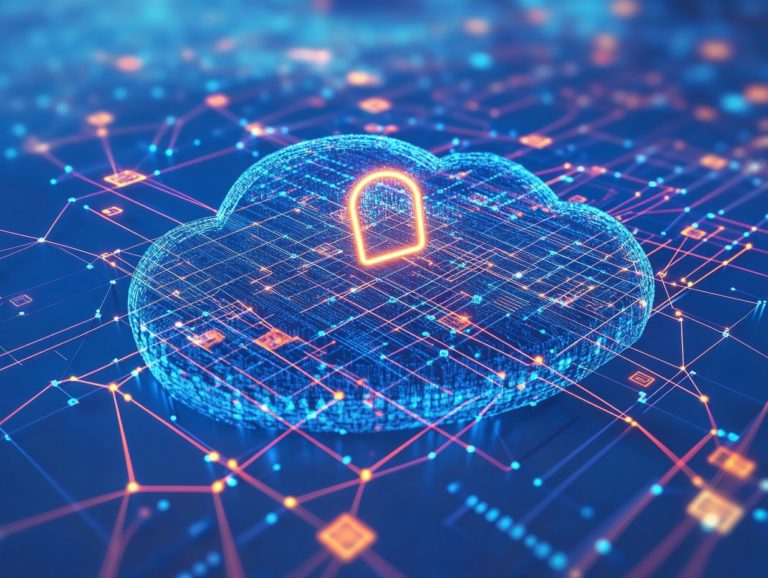The Role of Security Information and Event Management in Cloud
In today’s digital landscape, the integration of cloud computing has revolutionized how you operate. However, it has also brought a host of security challenges. As your business increasingly relies on cloud services, you must master security management now.
Let s dive into the exciting world of Security Information and Event Management (SIEM)! This article explores its vital role in identifying and mitigating risks, outlines best practices for implementation, and highlights its benefits in enhancing security and compliance.
Embark on this journey with us as we navigate the intricacies of SIEM in cloud environments and uncover emerging trends that are shaping the future of cloud security.
Contents
Key Takeaways:

- SIEM is a crucial tool for monitoring and managing security events in the cloud environment.
- Common risks and threats in cloud computing can be addressed and mitigated through SIEM.
- Implementing SIEM in the cloud requires careful considerations and adherence to best practices for optimal results.
The Basics of Security Information and Event Management (SIEM)
Security Information and Event Management (SIEM) serves as an essential framework, meticulously designed to aggregate and analyze security data from various sources within your enterprise’s IT infrastructure.
By utilizing advanced analytics and real-time analysis, SIEM tools provide profound insights into security threats. This equips you to bolster your incident response capabilities and ensure compliance with vital regulations like GDPR, HIPAA, and PCI-DSS.
The incorporation of machine learning significantly enhances SIEM systems. This improves threat detection and monitoring, fortifying your overall security posture.
Definition and Function
SIEM comprises a sophisticated suite of tools designed for real-time data collection, log management, and threat detection across your organization s security landscape.
By aggregating data from various sources such as firewalls, intrusion detection systems, and servers SIEM enables you to monitor unusual patterns that may signal potential security incidents.
This solution not only captures security events but also leverages advanced analytics to correlate data points. This empowers your security teams to uncover hidden threats and streamline incident response processes.
By automating security workflows, SIEM significantly reduces the time required to identify and address vulnerabilities. This ultimately enhances your organization s overall security posture. The thorough examination allows you to prioritize alerts effectively, ensuring that critical incidents are escalated promptly for resolution.
Cloud Computing and Security Challenges
As you navigate the growing landscape of cloud computing, you are faced with numerous security challenges that jeopardize the integrity, confidentiality, and availability of your data.
The security threats you encounter ranging from DDoS (Distributed Denial of Service) attacks to ransomware and insider threats are constantly evolving. This compels you to implement robust strategies to mitigate risks within cloud environments.
Compliance requirements such as GDPR and HIPAA create more complexity. Effective solutions are necessary to safeguard data and ensure adherence to regulatory mandates.
Common Risks and Threats
Organizations leveraging cloud computing encounter many risks and threats, particularly in cybersecurity, where data breaches and malicious activities can target sensitive information.
In addition to these challenges, you must navigate risks such as insufficient access controls, leading to unauthorized data access, and vulnerabilities in application programming interfaces (APIs) that can expose your systems to attacks.
Insider breaches, where employees misuse their access privileges, and compliance issues related to data protection regulations can have serious consequences.
To mitigate these risks, consider implementing robust encryption protocols, conducting regular security audits, and developing comprehensive identity and access management strategies.
Together, these measures will significantly strengthen your security posture in the cloud environment.
Ready to take the next step in improving your cloud security? Start by exploring SIEM solutions that fit your needs!
The Need for SIEM in Cloud Security

In today s dynamic landscape of cloud security, the need for a cloud-based SIEM solution is more pronounced than ever for organizations seeking to improve their security monitoring and response.
By harnessing information about potential threats and gaining insights into user behavior, SIEM systems can proactively detect and address security threats while ensuring compliance with industry regulations.
This proactive strategy is essential for staying ahead of threats and effectively managing security incidents and vulnerabilities within intricate cloud environments.
How SIEM Addresses Cloud Security Challenges
SIEM solutions tackle cloud security challenges with precision through advanced analytics and anomaly detection, enabling you to swiftly identify and respond to security incidents.
By harnessing sophisticated algorithms, these systems analyze vast amounts of data in real-time, continuously monitoring user behavior and system activity for any irregularities.
This intelligent risk management approach not only allows you to detect potential threats but also enables you to predict and mitigate incidents before they escalate.
The integration of machine learning further enhances your capability to adapt and improve over time, helping you identify patterns that may indicate advanced persistent threats.
In this ever-evolving landscape, you are equipped to respond effectively, maintain a robust security posture, and ensure compliance with regulatory standards.
Implementing SIEM in the Cloud
Implementing SIEM in cloud environments demands careful attention to integration capabilities and security workflows. This diligence is crucial for effective data retention and a robust incident response strategy.
Key Considerations and Best Practices
When implementing SIEM, it s essential to adhere to key considerations and best practices that not only enhance your security capabilities but also ensure compliance with regulatory standards.
- Start with a thorough assessment of your existing security infrastructure; this will facilitate seamless integration with your current systems and processes.
- Prioritize user behavior analysis to detect anomalies that may indicate security threats, allowing for more effective incident response strategies.
- Understanding regulations like GDPR or HIPAA helps you tailor your approach, ensuring adherence and protection of sensitive data.
- Establish clear communication and training programs to foster a culture of security awareness, enabling your employees to play an active role in safeguarding the organization.
Benefits of Using SIEM in the Cloud
Utilizing SIEM in the cloud offers a multitude of advantages, such as:
- Enhanced security posture
- Superior compliance management
- Robust threat detection capabilities
The ability to generate automated reports enables your security teams to streamline workflows and effectively prioritize incident response efforts, ensuring that critical threats are addressed promptly and efficiently.
Improved Security and Compliance

SIEM solutions elevate your security and compliance efforts significantly by delivering real-time visibility into security events, allowing you to respond adeptly to potential threats.
By integrating threat intelligence, these systems proactively identify and mitigate risks, enabling you to stay ahead of emerging threats.
Continuous monitoring strengthens your compliance with various regulatory frameworks, such as GDPR and HIPAA, by meticulously tracking and analyzing user activities and data flows.
This capability enables you to maintain a robust security posture while automating compliance reporting, thereby reducing the chance of human error.
Ultimately, leveraging SIEM not only enhances your data protection measures but also cultivates a culture of accountability within your organization, making it simpler to align with industry standards.
Don’t wait until it’s too late! Start securing your cloud environment today with a SIEM solution tailored to your needs!
Future of SIEM in Cloud Security
The future of SIEM in cloud security is set to evolve significantly as emerging trends and technologies like machine learning and user behavior analytics transform the cybersecurity landscape. Get ready to discover how these tools can revolutionize your security approach!
These advancements will improve threat detection and response times, enabling organizations to develop increasingly robust security capabilities in a constantly shifting environment.
Emerging Trends and Technologies
Emerging technologies like machine learning and automation are transforming the SIEM landscape. They offer unparalleled efficiency in threat intelligence and incident response.
These advancements enable you to analyze vast amounts of data in real-time, significantly improving your ability to spot anomalies and proactively address potential threats.
By utilizing advanced analytics and methods for spotting unusual behavior, your security team can not only identify patterns of suspicious activity but also reduce false positives. This leads to a more targeted response strategy.
The incorporation of automation within SIEM tools streamlines incident management processes, enabling quicker investigations and allowing your team to allocate resources more effectively.
This evolving synergy between technology and security operations ultimately enhances your organization’s resilience and strengthens defenses against increasingly sophisticated cyber threats.
Frequently Asked Questions
SIEM plays a crucial role in cloud security. It is responsible for monitoring, detecting, and responding to security threats and events in a cloud environment. Additionally, understanding the role of threat intelligence in cloud security can enhance its effectiveness. SIEM collects and analyzes data from various sources to provide real-time visibility and insights into the security posture of the cloud infrastructure.
SIEM helps in securing the cloud environment by providing continuous monitoring and analysis of security events and logs from different cloud services. It also enables automated security in the cloud, helping to mitigate risks and protect sensitive data.

The key features of SIEM that are crucial for cloud security include:
- Real-time monitoring
- Threat intelligence
- Security analytics
- Automation
- Integration with other security tools
These features work together to provide comprehensive security coverage and improve the overall security posture of the cloud environment.
Yes, SIEM can be deployed in any type of cloud environment, including public, private, and hybrid clouds. It is a flexible and scalable solution that can adapt to the unique security needs of different cloud architectures.
Some benefits of using SIEM in the cloud include:
- Improved security visibility
- Faster threat detection and response
- Reduced risk of data breaches
- Compliance with regulatory requirements
- Cost savings through automation and centralization of security management
Act now to take advantage of improved security visibility and faster threat detection!
Yes, there can be some challenges to implementing SIEM in the cloud. These include:
- Integration with different cloud services
- Scalability and performance issues
- Maintaining the security of the SIEM infrastructure itself
However, these challenges can be overcome with proper planning, expertise, and the right tools and processes.
Don’t wait strengthen your cloud security with SIEM today!






